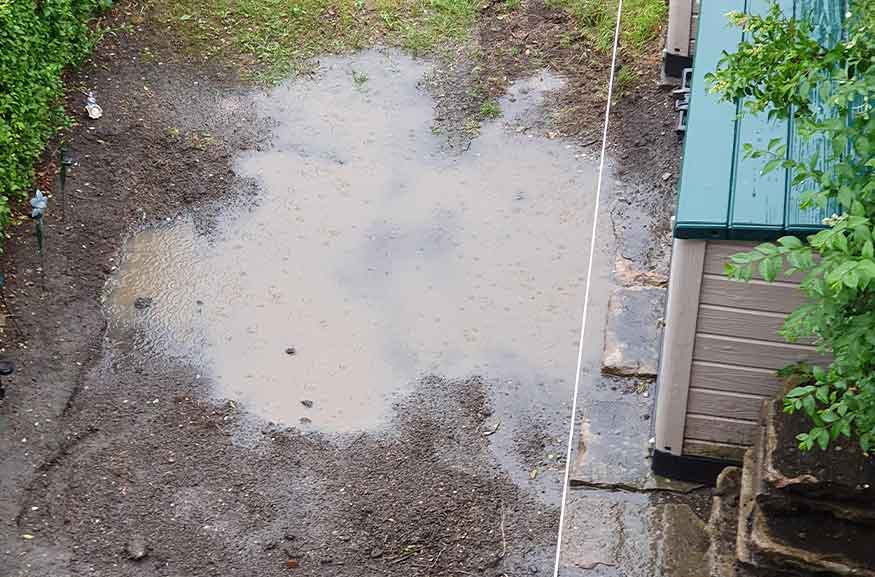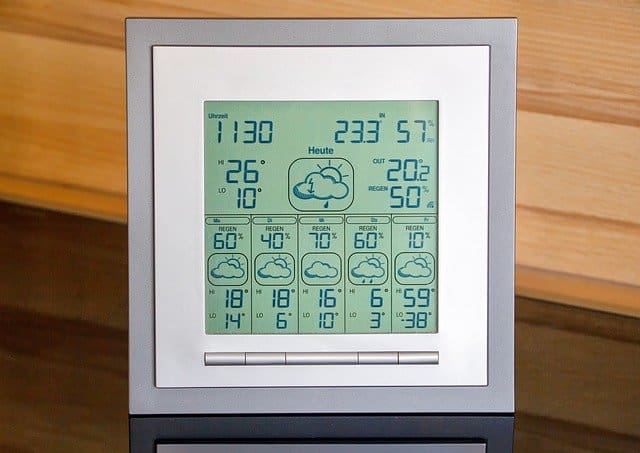This was ANNOYING! So the other day my detail oriented brain notices these unpleasant patches of dead grass and exposed mud on my lawn.
It was only right that before the day was over I was marching back from the store armed with fresh grass seeds, the reassuring noise of the seeds rattling inside their cardboard box. Singing to me with every step.
So there I was shaking and tapping this cardboard box of seeds to place them perfectly within these unsightly patches of grass. Willing my immaculate lawn in to existence….
It is was quite satisfying work to be honest! A couple of hours later and there are seeds evenly distributed and a spray of water over every patch so they grow. I even informed the family about not stepping on the grass seeds as it might harm them.
Then as you might have guessed, rain like you have never seen before where I live washes everything away. Made worse by the fact my garden is on a slope!
It is fair to say those seeds never grew in the right places. If at all…
Don’t be like me, read this article in detail on how do you protect grass seeds form heavy rain?

Table of Contents
Lawn aeration
The reason why rain flows over your soil so quickly without it absorbing in like it should do is because either the oil is already saturated which is rarely the case of the soil is so dry and compacted that it take a long time for water to be able to penetrate.
Hence, in periods of heavy rain, most of the water flows over the top of your soil
To avoid this issue, try to buy some aeriation shoes or you can go as advanced as an aeriation machine for large pieces of land or if you are on a budget, use a pitch fork you already have and poke some holes in your garden before planting.
Make your lawn level
This is an obvious one for rain rushing off of your lawn due to gravity. Hiring a landscaper or moving soil around yourself could be a good way to reduce the runoff of water in your garden and increase how much water is absorbed by the soil.
Check the weather
Of course if you are reading this article the chances are you are in a climate where it rains every day and tropically.
However, keeping an eye out for any unusual dry spells in weather patterns could be crucial in the first few days of your grass seeds taking root in your soil.

Even just looking out for a lack of severe thunderstorms using the governments weather website could save you some trouble
Use mulch or top soil
Grass seeds grow best when they are placed directly on the top of soil because of how small these seeds are. However, sprinkling a bit of dry top soil over the top could save our grass seeds from washing away
You could use some compost to further fertilize the soil and kill two birds with one stone
Alternatively, mulch works in the same way to protect the seeds and help establish your grass.
I would recommend using a bio degradable type of mulch such as straw so that you won’t have to go back and take it up once your grass is grown.
Use an erosion control blanket
The blanket seen in the image below is probably the most effective solution on the list because it is designed specifically for establishing vegetation on bare soil areas. However it is probably the most expensive. Especially if you have a lot of land to cover.
The good thing about it is once your grass is established it will grow through the cover which is usually a type of woven material able to biodegrade overtime. So you just need to set it up once.

To set it up, simply sow your seeds and lay the blanket over the top of the sow area and water. You should watch your grass seed grow right through the mat while at the same time it starts to biodegrade. Leaving you with fresh grass that is able to be re-rooted.
Conclusion
It is probably a wise idea to do a combination of these solutions for best results. For example, aerate your soil, then check the weather and have an erosion control blanket just in case the weather forecast is wrong.
That way you are covering all bases and your grass seeds will be sure to grow in to the healthy lawn you so desire.
It is also useful to have access to this information because if you ever end up planting treated seeds, these can remain in your garden in places you didn’t expect them to. Contaminating water supplies and maybe harming wildlife.
It would also be useful to read up on how to prevent your mulch from blowing away if you live in particularly windy and rainy conditions and you are trying to keep your garden functioning well and in tact despite your climate.
